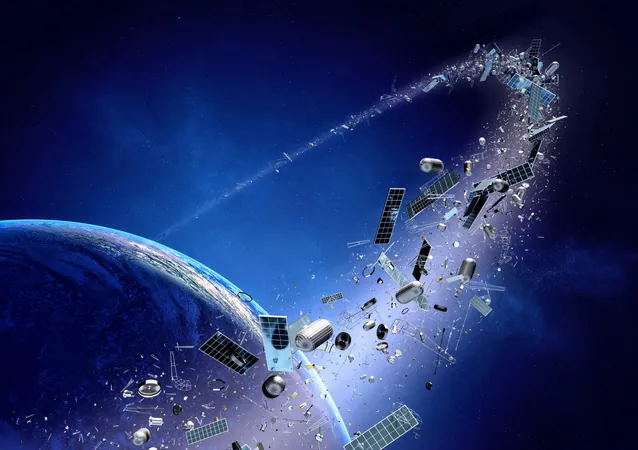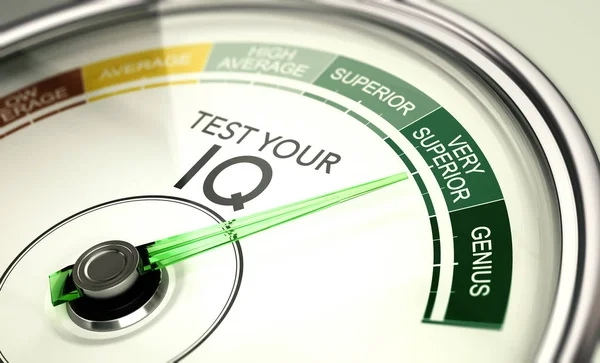
Is Earth’s Space Debris Crisis Unraveling the Future of Satellite Communications and Astronaut Safety?
2024-12-31
Author: Chun
On October 19, 2023, the US Space Command alerted the world to a disconcerting incident: the Intelsat 33e satellite shattered into roughly 20 distinct pieces, exacerbating the mounting issue of space debris. Although the cause of this fragmentation remains a mystery, this occurrence has reignited serious discussions surrounding the burgeoning dangers of space junk in Low Earth Orbit (LEO).
Understanding Low Earth Orbit (LEO)
Low Earth Orbit (LEO) is a region that lies between 100 and 1,200 miles (160 to 2,000 kilometers) above Earth. It's the go-to orbit for various satellites and space stations due to its accessibility and cost-effectiveness. Objects in LEO complete their orbits in about 90 minutes, allowing for multiple passes over locations on Earth each day. This advantage makes it an ideal location for crucial operations such as communication, weather forecasting, and Earth observation. The International Space Station (ISS), a symbol of human ingenuity, orbits at approximately 250 miles (400 kilometers) above the surface—making it susceptible to the growing threat of space debris.
The Thundering Shadow of Kessler Syndrome
NASA scientists Donald Kessler and Burton Cour-Palais introduced Kessler Syndrome in 1978, predicting a scenario where collisions between orbiting objects generate debris, leading to further collisions. This cascading effect poses a grave risk, potentially leading to an unusable Low Earth Orbit and jeopardizing satellite launches, space exploration missions, GPS operations, and more. According to John L. Crassidis, a space debris expert at the University at Buffalo, "The Kessler Syndrome is going to come true. If the probability of a collision is so great that we can’t put a satellite in space, then we’re in trouble."
The Space Debris Dilemma
The space around Earth has never been this crowded; over 10,000 active satellites currently occupy this region, with around 6,800 belonging to Elon Musk's Starlink network. Plans by companies like SpaceX and Amazon to deploy thousands more satellites only heighten the collision risk. Since 1957, there have been over 650 fragmentation events, including notable incidents like Russia's destructive test in 2021 where it obliterated one of its satellites, generating over 1,500 additional debris fragments. Bill Therien, CTO at ExoAnalytic Solutions, stated that tracked debris can range from small fragments the size of a softball to larger objects comparable to a car door.
Life or Death for Astronauts and Technology
The ramifications of space debris are substantial. The ISS routinely conducts evasive maneuvers to dodge debris, with one recent incident prompting a Russian spacecraft to alter its course to avoid a piece of debris that came alarmingly close—just 2.5 miles away. A cascade of satellite collisions or malfunctions due to orbital congestion could put critical services, including GPS and broadband internet, at risk of failure, severely disrupting our modern way of life.
Combatting Kessler Syndrome
In an effort to tackle the debris issue, organizations like the European Space Agency (ESA) are pioneering initiatives such as Clearsat-1, collaborating with Swiss startup ClearSpace to capture and de-orbit non-functional satellites. Other technologies aim to expedite debris descent through innovative drag sails. However, monitoring and mitigating this debris presents a formidable challenge, as the ESA estimates upwards of 40,500 pieces larger than 10 centimeters exist, alongside millions of smaller fragments that current tracking technologies fail to detect.
The Urgent Call for Regulation
Experts stress the need for international collaboration to establish enforceable space regulations. The United Nations has initiated the "Pact for the Future," aiming to mitigate space debris through structured traffic and resource management frameworks, yet enforcement mechanisms are notably absent. Dr. Vishnu Reddy, a planetary sciences professor at the University of Arizona, emphasized, "The biggest concern is the lack of regulation; norms and industry guidelines can significantly help."
The Future of Space and Technology
In conclusion, as satellite launches into LEO gain momentum, the peril of collisions and the looming threat of Kessler Syndrome become increasingly tangible. With vital technologies that underpin navigation, communication, and even weather forecasting at stake, experts advocate for immediate, proactive measures—from technological innovations to strict regulatory frameworks—to safeguard Earth’s orbital environment. Ignoring this crisis could lead to dire consequences, not only for space exploration but for the foundational aspects of modern living reliant on satellites. If we fail to address this evolving threat, we could potentially be on the brink of a catastrophic scenario that undermines our capacity for future space endeavors. The pressing need for international cooperation and robust guidelines may be the key to preventing a chaotic future amidst the final frontier.



 Brasil (PT)
Brasil (PT)
 Canada (EN)
Canada (EN)
 Chile (ES)
Chile (ES)
 Česko (CS)
Česko (CS)
 대한민국 (KO)
대한민국 (KO)
 España (ES)
España (ES)
 France (FR)
France (FR)
 Hong Kong (EN)
Hong Kong (EN)
 Italia (IT)
Italia (IT)
 日本 (JA)
日本 (JA)
 Magyarország (HU)
Magyarország (HU)
 Norge (NO)
Norge (NO)
 Polska (PL)
Polska (PL)
 Schweiz (DE)
Schweiz (DE)
 Singapore (EN)
Singapore (EN)
 Sverige (SV)
Sverige (SV)
 Suomi (FI)
Suomi (FI)
 Türkiye (TR)
Türkiye (TR)
 الإمارات العربية المتحدة (AR)
الإمارات العربية المتحدة (AR)